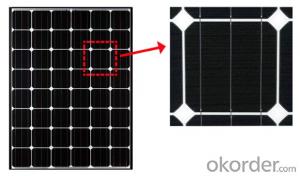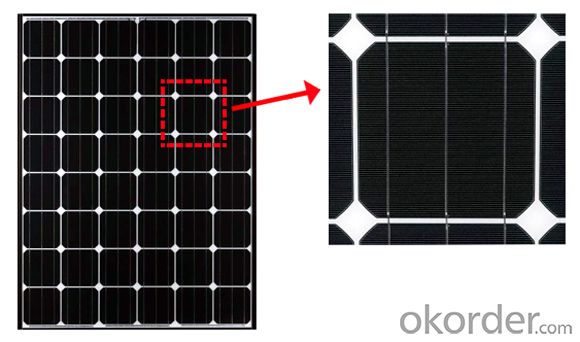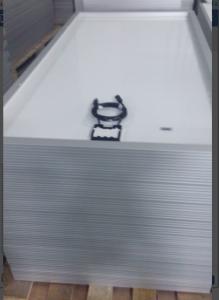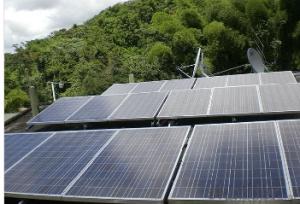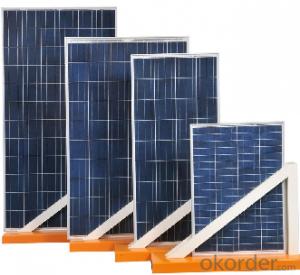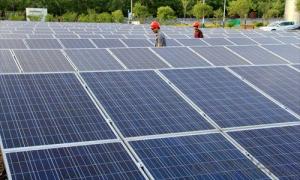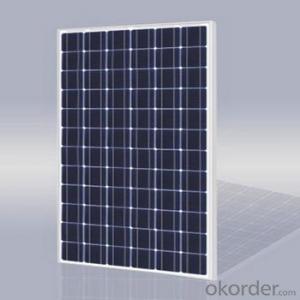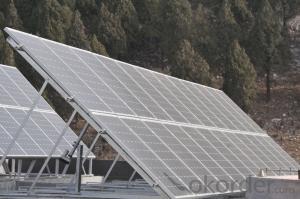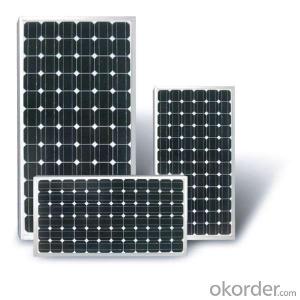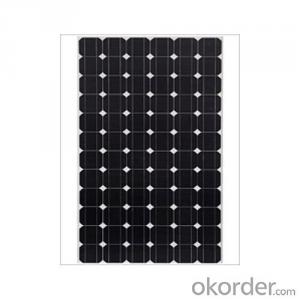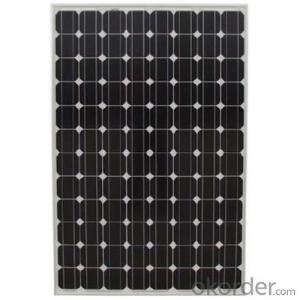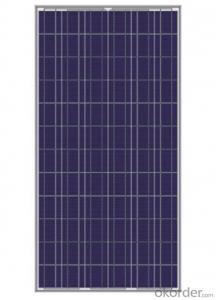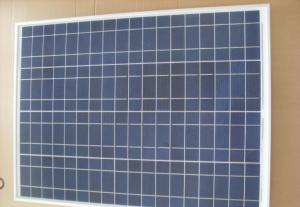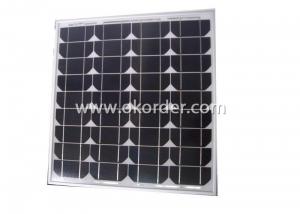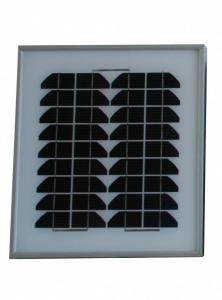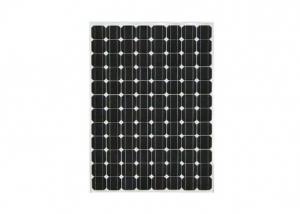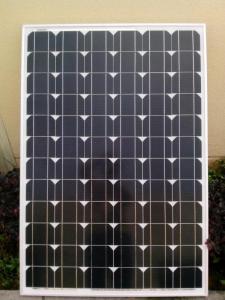First Solar Panels for Sale - Solar Monocrystalline 125mm Series (85W-100W)
- Loading Port:
- Shanghai
- Payment Terms:
- TT OR LC
- Min Order Qty:
- 1000 watt
- Supply Capability:
- 20000000 watt/month
OKorder Service Pledge
OKorder Financial Service
You Might Also Like
Specification
1.Description of the Solar Module
Solar Monocrytalline 125mm Series (85W-----100W)
The making craft of polycrystalline silicon solar panels with monocrystalline silicon solar panels is similar, but the photoelectric conversion efficiency of polycrystalline silicon solar panels to reduce a lot, the photoelectric conversion efficiency is about 12% (on July 1, 2004, Japan's sharp market efficiency for 14.8% of the world's highest efficiency of polycrystalline silicon solar panels). In terms of production cost is cheaper than monocrystalline silicon solar panels, material is simple, save power consumption, the total production cost is low, so get a lot of development. In addition, the service life of the polycrystalline silicon solar panels is shorter than monocrystalline silicon solar panels. As for the price performance ratio, monocrystalline silicon solar panels is slightly better.
2.Characteristics of the Solar Module
Max Power Voltage Vmp (V) | 17.8 | 18.0 | 18.2 | 18.4 |
Max Power Current Imp (A) | 4.78 | 5.00 | 5.22 | 5.43 |
Open Circuit Voltage Voc (V) | 22.4 | 22.6 | 22.8 | 23.0 |
Short Circuit Current Isc (A) | 5.13 | 5.31 | 5.56 | 5.89 |
Max Power Pm(W) | 85 | 90 | 95 | 100 |
3.Limits of the Solar Module
Operating Temperature | ﹣40℃to+85℃ |
Storage Temperature | ﹣40℃to+85℃ |
Max System Voltage | 700V |
4.Specifications of the Solar Module
Power | 85W/90W95W/100W |
Dimension | 1190x550x30mm |
Weight | 8kg |
Tolerance | ±3% |
The dimension of the modules can be changed according to the demand of clients
5.Guarantee of the Solar Module
Products Guarantee | 2 yrs free from defects in materials and
workmanship |
Performance Guarantee | No less than 90% within 10yrs and no less than 80% within 20yrs |
Certificates | IEC,ISO,TUV,CE |
6.Applications of the Solar Module
1.Electricity
2.Heat energy
7.IMages of the Solar Module
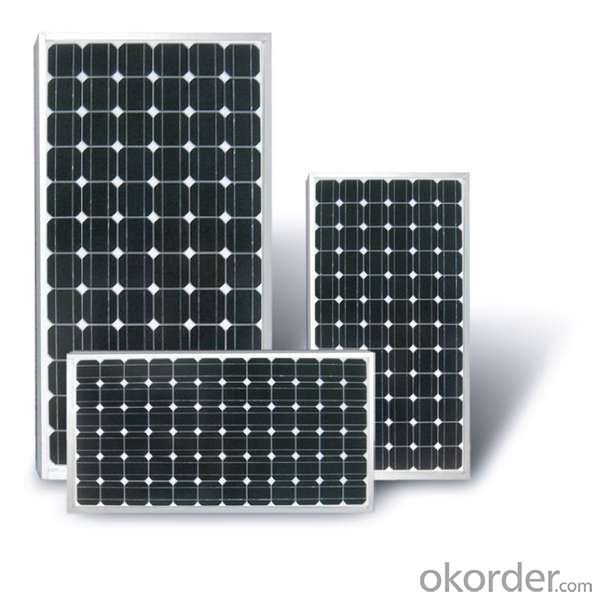
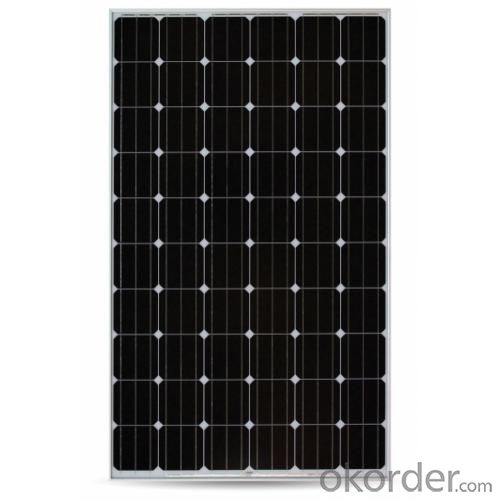
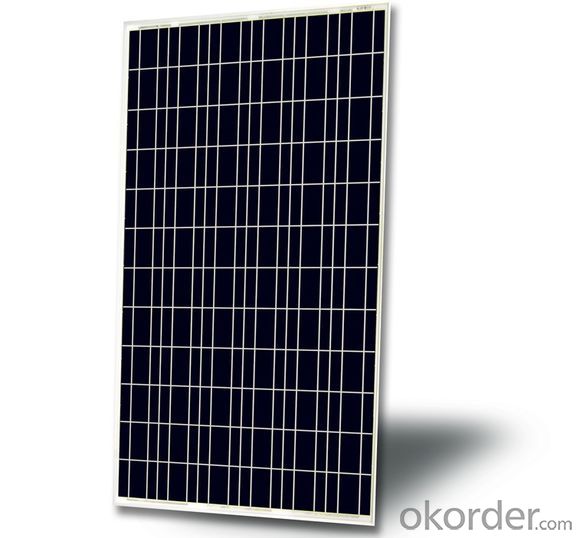
FAQ
1. Q: Do you have your own factory?
A: Yes, we have. Our factory located in Jiangyin city, jiangsu province.
2. Q: How can I visit your factory?
A: Before you take off from your country, please let us know. We will show you the way,or arrange time to pick you up if possible.
3. Q: Do you provide free sample?
A: Usually we do not offer free sample
4. Q: Could you print our company LOGO on the nameplate and package?
A: Yes, we can do that.
- Q: Can solar panels be used during a power outage?
- No, solar panels cannot be used during a power outage unless they are connected to a battery storage system.
- Q: I am fairly new to the solar panel scene, and am eager to try to set one up myself instead of buying a kit. I am looking for a solar panel that puts out 00 Watts or more, and can produce more than 20 volts. Thanks
- you are able to desire to be greater specific approximately what variety of image voltaic panel. a million) PhotoVoltaic (produces electrical energy) 2) Fluid (Glycol) (heats water or air making use of a warmth substitute tank) 3) Fluid (Water) for pool water heating
- Q: Does a solar panel work under a full moon a tiny bit, or not at all? Likewise, if you used mirrors or lenses the concentrate sunlight, is there a maximum to how much a solar panel can handle?
- solar panels should be used where the sunlight is abundant,you can use mirrors or lenses the concentrate sunlight,solar panels will absorb more light.
- Q: How do solar panels affect the property's overall cost savings?
- Solar panels can have a significant positive impact on a property's overall cost savings. By harnessing sunlight to generate electricity, solar panels can reduce or even eliminate monthly electricity bills. Additionally, excess energy generated by solar panels can be sold back to the grid, providing an additional income stream. Furthermore, solar panels can increase the value of a property, making it more attractive to potential buyers. Overall, solar panels contribute to long-term cost savings by reducing reliance on traditional energy sources and providing a sustainable and cost-effective energy solution.
- Q: Can solar panels be installed on a convention center or event venue?
- Yes, solar panels can be installed on a convention center or event venue. In fact, many convention centers and event venues have already embraced solar energy as a sustainable and cost-effective solution. The large roof spaces available in these facilities are ideal for installing solar panels, which can generate clean and renewable electricity to power the venue's operations and reduce its carbon footprint. Additionally, the visibility of solar panels on such prominent buildings can serve as a powerful symbol of commitment to sustainability and inspire others to adopt renewable energy.
- Q: How can I calculate the amount of watts needed for a solar panel to power a water and air pump in gal/hr and a 600 watt LED light?
- With you up to solar panel, then things go downhill. Your Water pump will be rated at gal/hr but how about the air pump? 600watt LED? What you need to know in order to select your solar panel is how much current you will be draining. You can work this out if you know how much power and how long they need to run. Please, a bit more information (that is relevant!).
- Q: Can solar panels be installed on warehouses or industrial facilities?
- Yes, solar panels can be installed on warehouses or industrial facilities. In fact, these large open spaces are often ideal for installing solar panels due to the ample roof space available. Installing solar panels on warehouses or industrial facilities can help generate clean and renewable energy, reduce electricity costs, and contribute to sustainability efforts.
- Q: hi everyone..i wanna do my major project on solar panels...so anyone kindly tell me the projects based on solar panels..
- I have done this in my project too and a solar panel, two wires, a circuit/project board, an LED light/a small fan,a switch and a solderer. Just solder the wires to the positive and negative parts of the panel, put the wires connected to the panel to the board put the LED's on the other side and the switch together with it shine light on the panel and the light/fan will work.(If it dosen't work, please DO NOT consult ME.)
- Q: So, assuming that a solar panel is flush with the ground (i.e. only the photovoltaic side is visible, the other sides are covered by dirt,) what would happen if it was run over by a car? How about an SUV? Would it break?Would the solar panel still generate electricity?
- Cars and SUVs weigh anywhere from a couple of thousand pounds up to ten thousand pounds. Solar panels are typically not designed to take that sort of weight. So the short answer is that it would crush the solar panel, and certainly damage the photoelectric cells inside it. - Stuart
Send your message to us
First Solar Panels for Sale - Solar Monocrystalline 125mm Series (85W-100W)
- Loading Port:
- Shanghai
- Payment Terms:
- TT OR LC
- Min Order Qty:
- 1000 watt
- Supply Capability:
- 20000000 watt/month
OKorder Service Pledge
OKorder Financial Service
Similar products
Hot products
Hot Searches
Related keywords
